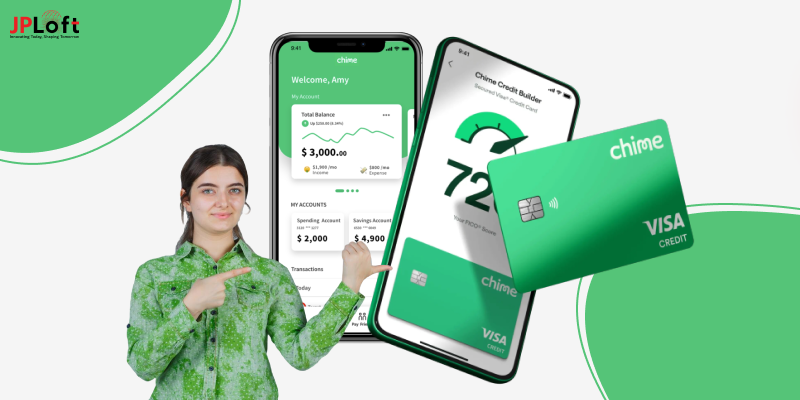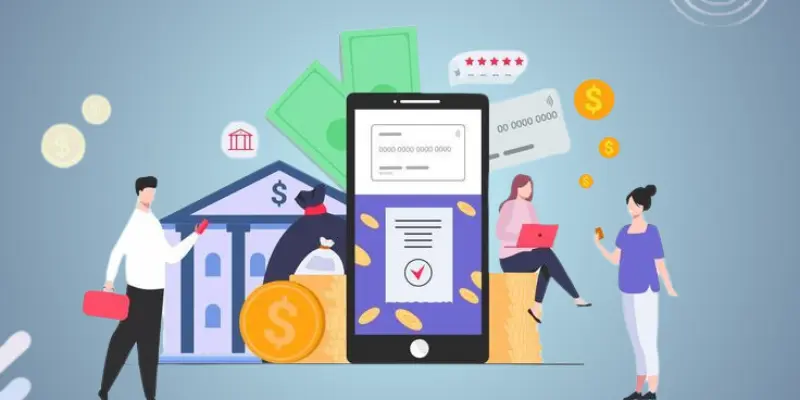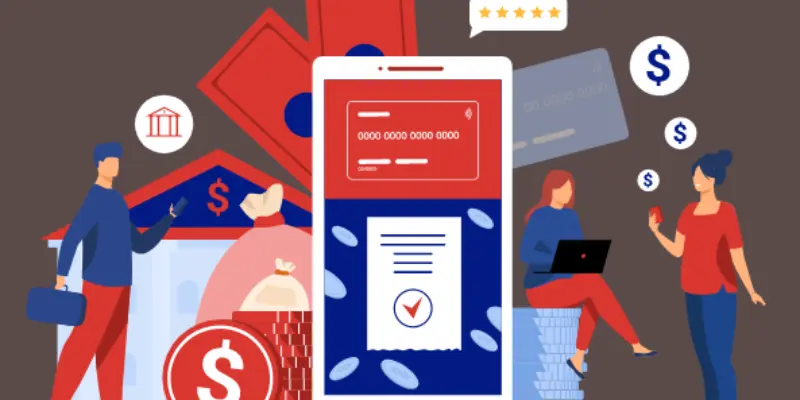Mobile banking apps have completely revolutionized how individuals and businesses manage their finances, providing unparalleled convenience and accessibility. As more individuals turn to smartphones for banking services, demand for robust yet user-friendly mobile banking apps continues to soar.
However, one key question remains for financial institutions and app developers: How much does mobile banking app development cost?" Mobile Banking App Development Cost depends upon many variables, from its complexity and feature set to security requirements and compliance regulations it must abide by. While the market for such mobile app development services can be competitive and diverse, understanding their cost dynamics is crucial for businesses embarking on this journey. This comprehensive study explores the main determinants of Mobile Banking App Development Cost. We will also address how best to design secure, user-friendly applications that satisfy modern consumers. Understanding the costs associated with developing mobile banking apps is vital, whether you are a financial institution looking to provide customers with a seamless mobile banking experience or an individual developer hoping to capitalize on a growing niche market.
What Is a Banking App?
Banking apps provide customers convenient and secure ways to access and manage bank accounts, credit cards, or other financial services from smartphones or tablets. Users can check account balances, view transaction histories, transfer money between accounts, or pay bills, among other features available in these banking apps. Banking apps also provide users with multiple security features to safeguard personal and financial data, including fingerprint or face recognition, two-factor authentication, and encryption to prevent unwarranted access to sensitive material.
Banking apps offer more than traditional banking services; many now also provide features like investment and budgeting tools that enable customers to manage their money more effectively while making sound financial decisions. 2021, the Global Mobile Banking Market was estimated to be $692.5 million. It is projected to experience a compound annual compound annual growth rate (CAGR) of 11.9% throughout its forecast period.
Factors Affecting the Cost of Mobile Banking App Development
Mobile Banking App Development Cost depends on several variables, including features, security, platform, and regulatory compliance requirements. We will explore how these factors impact Mobile Banking App Development Cost.
App Features and Complexity
A key determinant of Mobile Banking App Development Cost for banks and financial institutions is their features and complexity, including which functions and capabilities they want to offer users. More features typically translate to higher development costs. Among them are common ones like:
- Account Management: Viewing account balances, transaction histories, and account details are considered basic functionality; adding more complex features like fund transfers, bill payments, or loan applications can further increase complexity.
- Alerts and Notifications: Receiving real-time or security alerts about account activity is critical. However, building a complicated notification system can significantly increase costs.
- Biometric Authentication: Implementing biometric authentication techniques such as fingerprint or facial recognition adds another layer of security but requires extra development efforts.
- Chatbots and Customer Support: Implementing chatbots or in-app customer support features for user queries can enhance an app's user-friendliness while increasing development costs.
- Personal Financial Management: Tools that support personal financial management, budgeting, and planning may increase an app's complexity and costs.
- Security Features: Due to the sensitive nature of financial data, adopting rigorous security measures like end-to-end encryption, two-factor authentication, and continuous monitoring can be costly.
- Cross-Platform Compatibility: Developing multiple platforms (iOS, Android) can significantly increase development costs due to creating separate codebases for each.
User Experience (UI/UX)
User experience (UI/UX) is of utmost importance in the success of any mobile banking app. An intuitive and user-friendly interface can increase customer satisfaction and engagement. Design considerations also affect development costs. Creating visually appealing apps requires graphic design fees, user testing costs, and ongoing optimization expenses to make an app attractive to its target market. Costs will quickly rise as soon as you require a more customized and unique user interface. They were finding an optimal combination of aesthetics, functionality, and usability to keep costs under control.
Platform Selection
The choice of platform for your banking android and iOS app development can impact its development cost significantly. Converting one app for both platforms usually requires additional resources as each uses distinct programming languages (Swift for iOS and Java/Kotlin for Android) with specific design guidelines - not to mention updating two codebases that may need ongoing updates and bug fixes can become prohibitively expensive in comparison with focusing on just one. Platform selection should reflect your target audience. If a significant portion of your customer base utilizes iOS devices, prioritizing iOS development may be more cost-effective; however, costs must be carefully evaluated against potential user bases and market reach.
Integration with External Systems
Mobile banking apps often need to incorporate numerous external services and systems for a seamless user experience, including those like:
- Integration with Core Banking Systems: Integration between bank core systems is vital to real-time account information access and transaction processing but can often be complex and expensive depending on existing infrastructure.
- Payment Gateways: For an app to facilitate online payments, various gateways will need to be integrated, each of which may incur different fees and integration costs.
- Third-Party Services: Involving third-party services for functionality like credit scoring, identity verification, or investment management may incur additional expenses.
- APIs and SDKs: Utilizing third-party APIs and software development kits (SDKs) can speed up development but may incur license fees.
Regulatory Compliance
Mobile banking apps must comply with various regulations and standards to safeguard user data security and privacy, which can impose significant costs upon development as it often necessitates additional features or security measures. A few regulations/standards to consider:
- Know Your Customer (KYC): Stringent identity verification procedures may necessitate additional features for verification, potentially adding to costs.
- Payment Card Industry Data Security Standard (PCI DSS): If an app processes credit card payments, complying with PCI DSS will necessitate secure data handling and storage, which may prove costly.
- General Data Protection Regulation (GDPR) Compliance: GDPR compliance requires strict data protection and privacy measures, impacting the app's architecture and functionality.
- Compliance with Country-Specific: Depending on your target market, additional country-specific regulations could complicate and increase costs for doing business in that location.
Security Measures
Banking iOS and android app development places great emphasis on security. Protecting user data and financial transactions must always come first, which requires robust measures to be put in place that include multiple components. This process can become very expensive if implemented improperly.
- Data Encryption: Implementing strong encryption to protect data in transit and at rest.
- Authentication: Protect sensitive information by implementing reliable authentication techniques such as two-factor authentication (2FA) or biometric verification.
- Penetration Testing: Regular security audits to detect vulnerabilities and rectify them.
- Ongoing Monitoring: Assessing the app for security threats while staying up-to-date with new protocols.
- Compliance: Meeting regulatory requirements often requires additional costs to cover other security features.
Quality Assurance and Testing
Testing is an integral component of mobile banking app development. Ensuring its functionality, security, and user experience requires thorough examination during development - this includes:
- Functional Testing: Verifying that all features and functionalities work as intended.
- Security Testing: Examining vulnerabilities and weaknesses in an app's security.
- Compatibility Testing: Verifying that it runs seamlessly on different devices and operating systems.
- Performance Testing: Evaluating an app's performance under various conditions to prevent crashes and slowdowns.
- Usability Testing: Usability Testing gathers user feedback to enhance the user experience.
All these testing stages require time, resources, and possibly additional personnel - each contributing to an increase in overall costs.
Maintenance and Updates
Mobile banking app development doesn't end once it has been released - ongoing maintenance and updates must occur to keep it secure, functional, and compliant with changing regulations. This may involve:
- Bug fixes: Addressing and rectifying bugs that arise post-launch.
- Feature Enhancements: Implementing new features and capabilities that keep the app competitive.
- Security Updates: Regularly reviewing security measures on an app in response to new threats.
- Platform Updates: Adjusting the app to new versions of operating systems and devices.
- Compliance Changes: Complying with ever-evolving regulations. These ongoing costs must be included when developing mobile banking app solutions.
Project Complexity and Timeline
The overall complexity and timeline of a project can have a dramatic effect on its cost. A project with tight deadlines and complex requirements could require additional resources - including more developers and project managers - which may increase costs significantly. Furthermore, rushing development could result in errors or bugs needing costly fixes.
Development Team Location
The location of a development team can also affect the cost of mobile banking app development. Hiring developers in regions with higher labor costs may drive up expenses; alternatively, outsourcing development to areas with lower labor costs may provide cost savings. However, considering quality work and effectively communicating with an offshore development team before making this decision is essential.
Project Management and Communication
Efficient project management and communication are crucial to controlling development costs. Miscommunication, scope changes, or mismanaging projects can cause delays and incur higher expenses; an experienced project manager can streamline development efforts while keeping projects on schedule and within budget constraints.
Scalability and Future-Proofing
As with any project, looking at your mobile banking app from an expansive view is very important. Building one with enough scalability features will allow it to adapt to new technologies as they come online - potentially saving both time and money in terms of rework or redevelopment costs in the long run.
Steps to Hire Remote Mobile App Developers for Banking App Development
Remote developers offer several advantages, such as accessing a global talent pool, reduced costs, and greater flexibility. Here are the essential steps necessary for hire remote mobile app developers for banking app development:
Define Your Project Scope
Before starting to search for remote mobile app developers, it's essential that you clearly define your project scope for banking app development. Determine the specific features and functionalities you would like in the app, such as security measures, payment integrations, user experience features, etc. An accurate project scope will help communicate your needs to developers effectively.
Budget Considerations
Mobile Banking App Development Cost is an essential element of hiring processes. Deliberate your budget for this project and consider hiring remote developers; often, these options save costs since they do not require office space, equipment, or other in-house resources to run effectively. In addition, consider ongoing support costs beyond initial development for ongoing maintenance or support costs.
Choose the Appropriate Hiring Model
There are different hiring models for remote mobile app developers: freelancers, development agencies, or engaging individual remote developers. Each has its advantages and disadvantages. Freelancers may be cost-effective but need more experience creating a complex banking app. Development agencies provide a team of specialists, but it may be more expensive. Individual remote developers offer flexibility and specific skills; however, you must manage this team. Select a model that best meets both your project requirements and budget constraints.
Search for Talent
Once your project scope, budget, and hiring model have been decided upon, you can begin searching for remote mobile app developers. There are various online platforms, such as job boards or freelance marketplaces where experienced app developers may be found, such as Upwork, Toptal, or Freelancer, that you could try your luck at finding. Carefully examine reviews, ratings, and portfolios when reviewing potential candidates, as this will provide insight into their quality.
Conduct Interviews and Assess Skills
An integral component of hiring mobile banking app development developers is conducting interviews and assessing their skills. This step ensures they possess the technical proficiency and experience necessary for mobile app development projects. Ask candidates for work samples, discuss past projects, and assess problem-solving abilities before hiring your developers.
Experience in FinTech or Banking-Related Projects
It is crucial when developing banking apps to seek developers with relevant experience. Experience in fintech/banking projects is invaluable as it shows an understanding of financial industry projects' specific requirements, security concerns, and regulatory compliance requirements. Experienced developers are more likely to produce high-quality products.
Effective Communication Is Essential
Communication skills are central to successful remote collaboration. When searching for mobile app developers remotely, ensure their communication abilities include proficiency in English or your preferred language. Clear and transparent dialogue ensures your project stays on schedule and developers understand and meet your requirements.
Check References
References offer invaluable insight into a developer's work ethic, reliability, and ability to meet project deadlines. Be bold and request previous clients or employers as references so you can gather more information on this developer's performance, quality, and professionalism.
Clarify Project Terms
Before finalizing your hiring process, discuss project terms with any selected remote mobile app developers. This should include a timeline, deliverables, payment structure, and written contractual agreements to avoid misunderstandings during development.
Implement Effective Collaboration Tools
Effective remote collaboration requires using practical tools and platforms for communication and project management. Ensure you have the necessary tools, such as project management software, communication apps, and version control systems - this will facilitate smooth cooperation between in-house staff members and remote developers.
Emphasize Security and Compliance
Banking app development demands stringent security measures and regulatory compliance. Discuss these requirements with your remote developers to ensure they understand the latest security protocols and industry regulations and regularly inspect the security measures during development.
Quality Assurance and Testing
Testing is an essential element of mobile app development. Your remote developers should conduct exhaustive quality assurance and testing procedures to identify any issues or bugs and address any of them as early as possible. Throughout this stage, work closely together to ensure your app satisfies all performance and security standards. 
Once the app has been launched, your collaboration with remote developers should not end. Consider an ongoing support and maintenance agreement to take care of updates, bug fixes, or feature enhancements as needed and ensure that it remains reliable and up-to-date.
Conclusion
Understanding the cost of developing a mobile banking app is a complex endeavor that depends on many variables. Mobile app development costs depend on several elements, such as an app's complexity, features, security requirements, and geographic location of its developer company. More previously discussed herein, simple applications with basic functionalities may incur lower expenses than more complex apps equipped with biometric authentication, artificial intelligence-powered chatbots, and multi-platform support features. An essential lesson from developing a mobile banking app is that although no cost-per-app development estimate exists, investing appropriately in security and compliance to safeguard its institution and users can have severe repercussions, including financial losses and reputational harm. Selecting an experienced mobile banking app development partner is essential when embarking on the path to mobile banking app creation. Such firms possessing substantial expertise in financial app development and knowledge of regulatory environments can offer invaluable guidance, contributing significantly to project success.
FAQs
1. What Factors Influence Mobile Banking App Development Cost?
The cost of developing a mobile banking app depends on factors like app complexity, platform selection (iOS or Android),features, security requirements, design, and your development team's location and experience
. 2. How Much Does it Cost to Develop a Basic Mobile Banking App?
A basic mobile banking app typically costs between $20,000 and $50,000 to develop, depending on its development team's specific requirements and hourly rates.
3. What features increase Mobile Banking App Development Cost?
Advanced features like biometric authentication, bill payment, fund transfers, investment options, and real-time customer support can significantly raise development costs.
4. Are there ongoing maintenance costs for a mobile banking app?
Maintaining a mobile banking app involves ongoing expenses for updates, security, compliance, and customer support. These expenses vary but remain essential in providing app reliability.
5. How Does App Design Impact Mobile Banking App Development Cost?
App design is integral to development costs; creating an appealing, custom design explicitly tailored to your brand can raise expenses but enhance user experience.
6. Do Third-Party Integrations Affect the Cost of Mobile Banking Apps Development? I
ntegration with third-party services like payment gateways, credit bureaus, or identity verification services can increase development costs significantly.
7. What should be considered when Building Mobile Banking App Development Cost?
Banking apps must feature robust security features to protect user data. While increased costs may result from these measures, their necessity cannot be overstated, as strong safeguards help safeguard user security and ensure user information integrity.
8. Are offshore development teams capable of reducing Mobile Banking App Development Cost?
While outsourcing can often provide cost-cutting solutions, their quality and expertise must be thoroughly assessed to avoid hidden expenses when selecting a team.













Share this blog